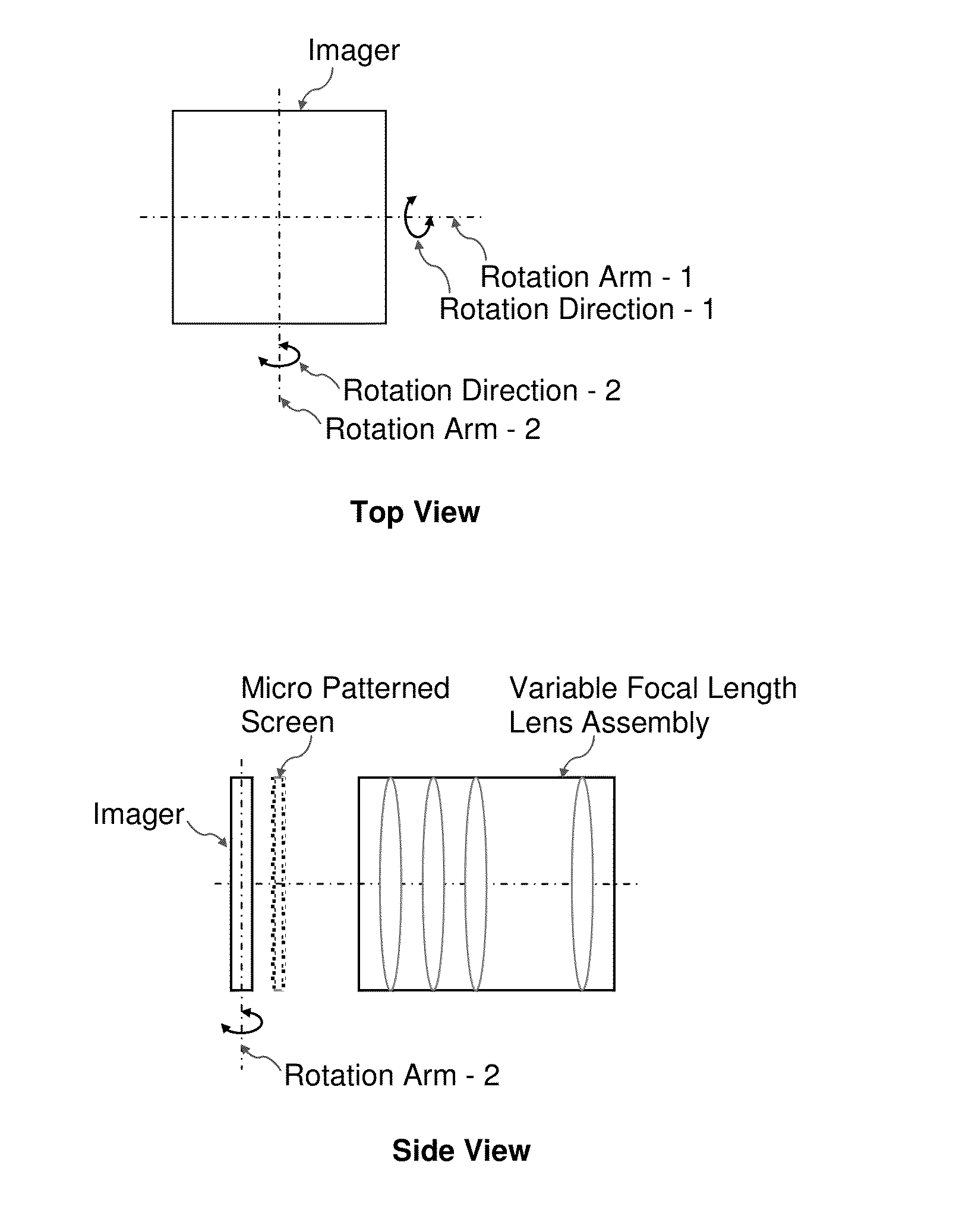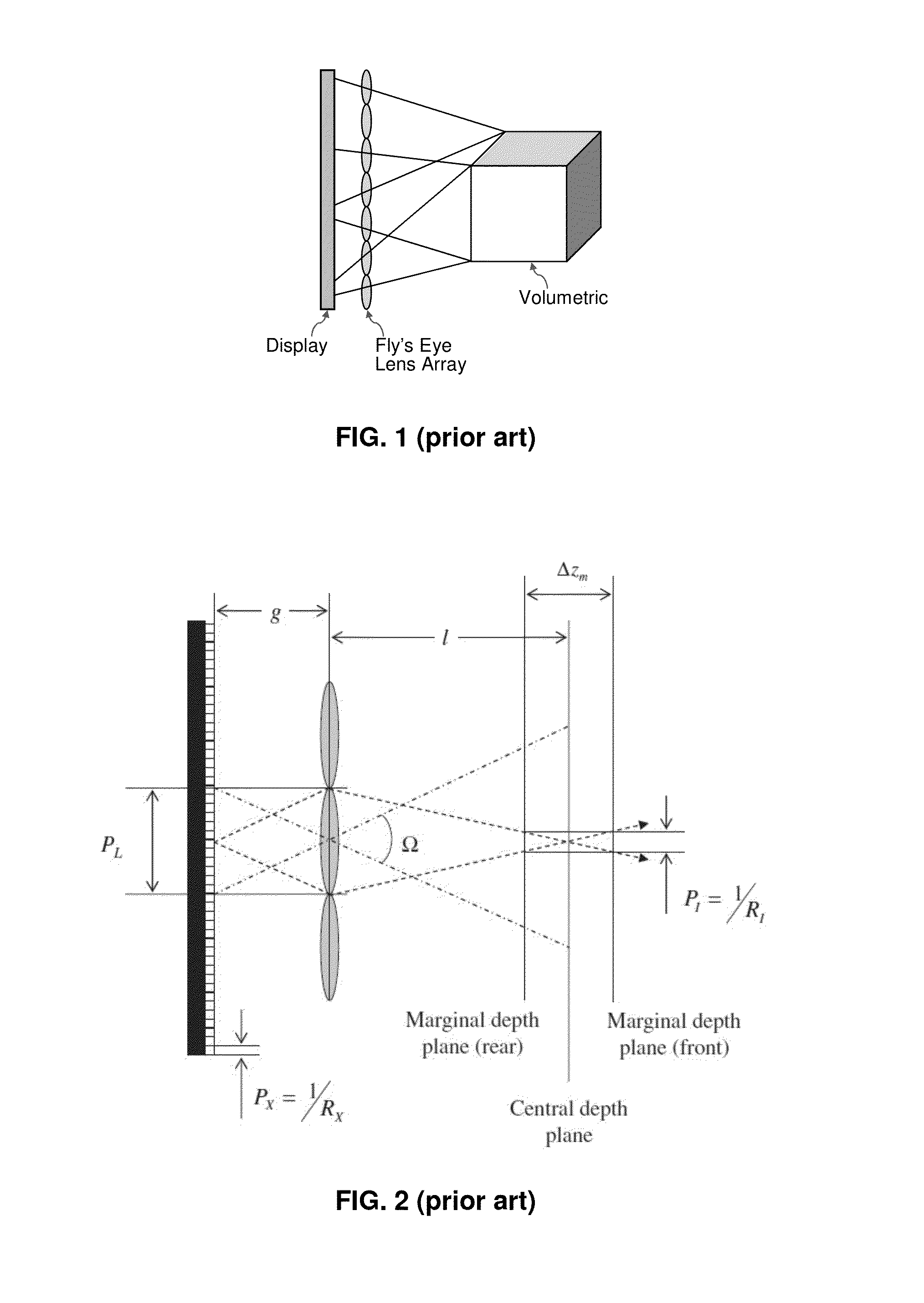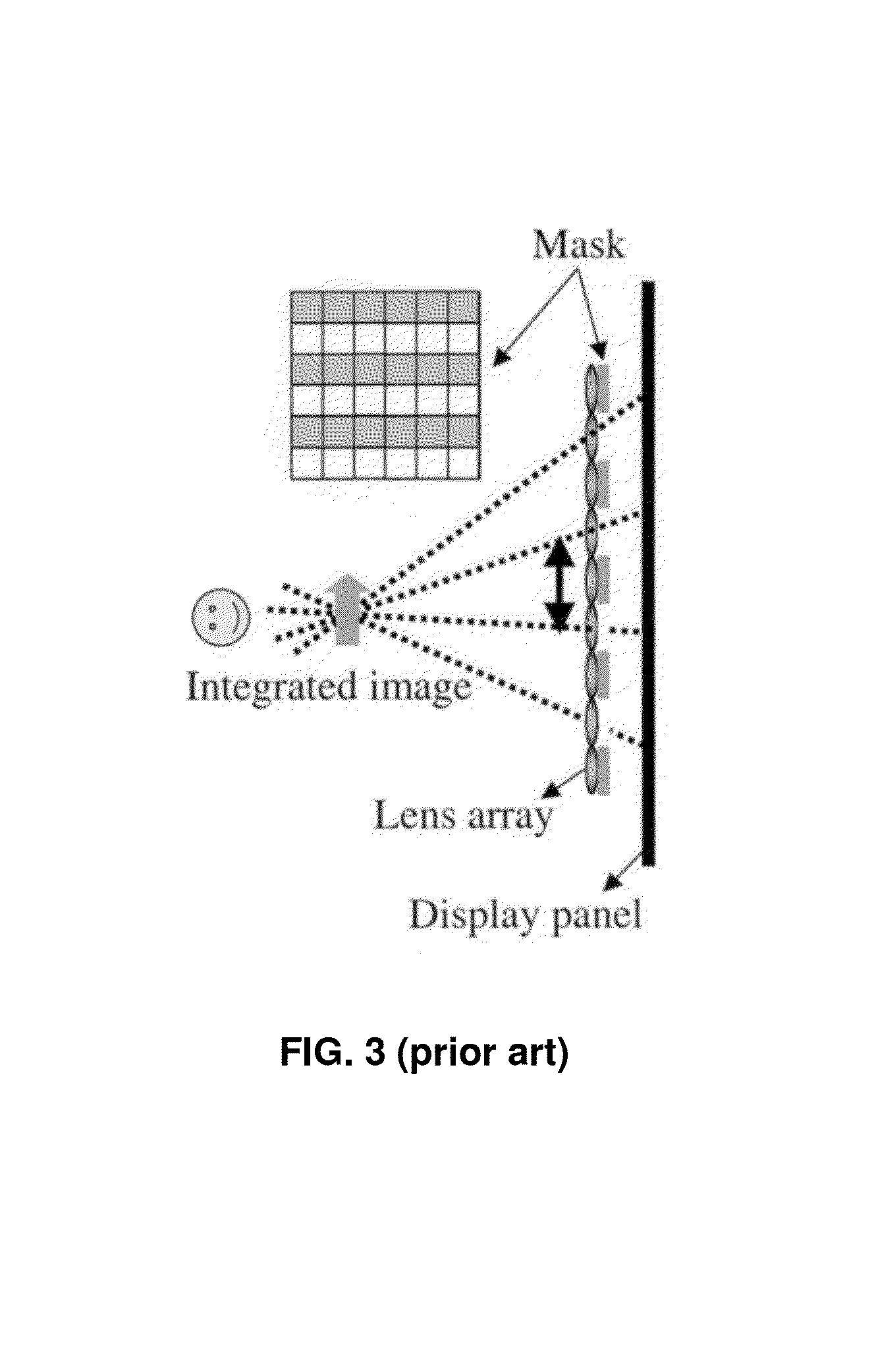3D Light Field Displays and Methods with Improved Viewing Angle, Depth and Resolution
a technology of light field and display, applied in the field of image and video displays, can solve the problems of its own limitations, limited quality, and designer being faced with having to make the combination of the other two parameters wors
- Summary
- Abstract
- Description
- Claims
- Application Information
AI Technical Summary
Benefits of technology
Problems solved by technology
Method used
Image
Examples
Embodiment Construction
[0112]The invention described herein details an easy to manufacture, high brightness, no color break up, wide viewing angle integral imaging system that does not sacrifice image resolution or image depth.
[0113]With the availability of high brightness, vertical stacking, small pixel pitch displays, Ref. [10], [12] and [13], a full parallax integral imaging display with a wide viewing angle and improved picture quality is feasible. This invention presents a method of improving the viewing angle of an integral imaging display without degrading the image resolution or the image depth. The invention eliminates the color distortions found in other integral imaging displays and achieves very high brightness in a very small volume.
[0114]These new types of emissive solid state displays have 10 μm or smaller pixel pitch, high dynamic range, and fast modulation speed, Refs [12], [13]. These types of displays, which can be driven by multi-core matched instruction set processors Ref [14] that ar...
PUM
 Login to View More
Login to View More Abstract
Description
Claims
Application Information
 Login to View More
Login to View More - R&D
- Intellectual Property
- Life Sciences
- Materials
- Tech Scout
- Unparalleled Data Quality
- Higher Quality Content
- 60% Fewer Hallucinations
Browse by: Latest US Patents, China's latest patents, Technical Efficacy Thesaurus, Application Domain, Technology Topic, Popular Technical Reports.
© 2025 PatSnap. All rights reserved.Legal|Privacy policy|Modern Slavery Act Transparency Statement|Sitemap|About US| Contact US: help@patsnap.com



